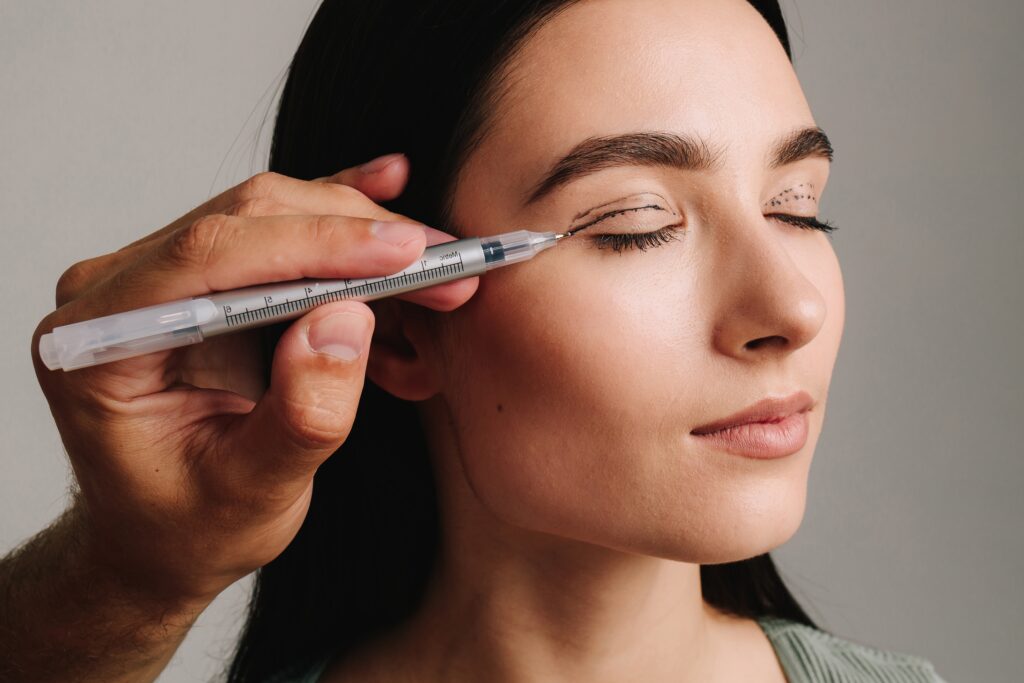
If the eyelids begin sagging into the field of vision, a functional blepharoplasty, or eyelid surgery, may become necessary. This procedure can be covered by medical insurance if it is visually significant. A determination of how much this condition affects vision is done by checking the peripheral visual field with instruments such as the Octopus or Optopol visual field analyzers.
An upper blepharoplasty will tighten the muscles and tissue as well as remove excess fat and skin from the upper eyelids. A blepharoplasty can eliminate the drooping of the skin into the visual field, improving peripheral vision tremendously.
Cosmetic blepharoplasty can be performed on either the upper or lower eyelid or both. If no skin needs to be removed, a transconjunctival blepharoplasty can be performed, in which the incision is made inside the lower eyelid so there are no visible scars. This procedure has no affect on vision, but offers a younger, more refreshed look that reflects across the whole face.
Blepharoplasty is the most popular facial plastic surgery procedure after rhinoplasty. The popularity of this procedure reflects the importance the eyes have in perfecting overall appearance. In fact, two-thirds of adults consider the eyes to be the defining feature of the face. If you are unhappy with the appearance of your eyes, you may want to consider blepharoplasty to improve your look and boost your confidence through a safe procedure with minimal downtime.

Candidates for a Blepharoplasty Procedure
The best candidates for blepharoplasty are those individuals who meet the following conditions:
If you have loose, sagging skin or puffy bags around your eyes, this procedure can help reduce these unwanted effects and leave the eyes looking young and fresh.
It is important for patients to have realistic expectations before undergoing a blepharoplasty procedure in order to be satisfied with their results. While the procedure can enhance your appearance and may improve self-confidence as a result, it cannot alter your entire appearance or change the structure of your face.

The Blepharoplasty Procedure
The blepharoplasty procedure is performed under local anesthesia with sedation. General anesthesia may be used for anxious or nervous patients. Patients may choose to have this procedure on their upper or lower eyelids, or both. Depending on these choices, the procedure can take anywhere from 45 minutes to 2 hours.
If the upper eyelid is being treated, an incision is made along the natural crease of the eyelid. Once the incision is made, the surgeon may reposition fat deposits, tighten muscles and tissue or remove excess skin in order to leave the eye looking younger and refreshed. For the lower eyelid, an incision is made just below the lash line in order for excess skin to be removed.
After the procedure is performed, the incisions are closed with sutures and usually wrapped in gauze to allow the area to heal.
Recovery after the Procedure
After the lower eyelid blepharoplasty procedure, your doctor may recommend applying lubricating drops or ointment and cold compresses to aid in the healing process and minimize side effects such as:
Stitches are usually removed within one week after the procedure. Swelling and other side effects usually subside within two weeks after surgery. Contact lenses and eye make-up may not be worn for a week after surgery. The doctor will give specific instructions on how to care for the eyes post-procedure.
